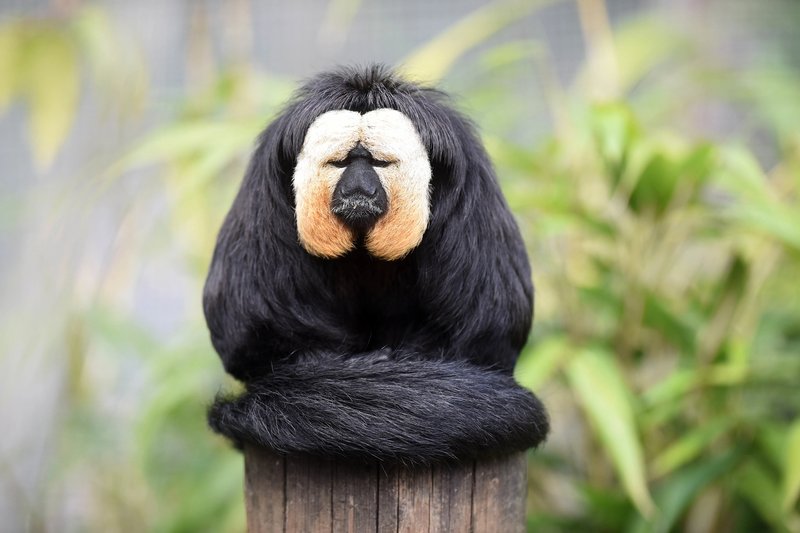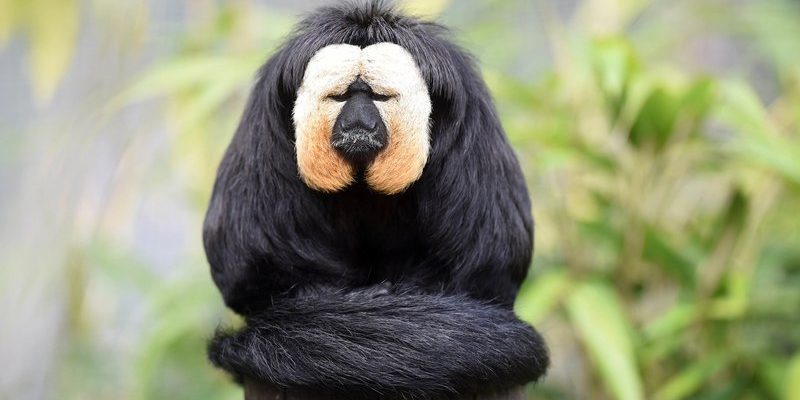
Imagine the Saki monkey as a rare gem in a vast forest. Their vibrant personalities and playful behaviors make them a sight to behold, but their numbers are dwindling. It’s a troubling reality that many people may not be aware of. So, let’s unpack the status of Saki monkeys and what’s being done to ensure their survival in a rapidly changing world.
Understanding Saki Monkeys: A Quick Overview
Before we dig deeper into their conservation status, it’s helpful to know a bit about Saki monkeys themselves. These are small to medium-sized primates that belong to the Pithecia genus. Found mostly in the tropical forests of South America, particularly in Brazil, Suriname, and Guyana, Saki monkeys are distinguished by their striking appearance, featuring long hair and a short tail.
There are several species of Saki monkeys, including the black saki, the white-faced saki, and the brown saki. Each species has unique characteristics and adaptations that allow them to thrive in their specific environments. For instance, black Sakis have a robust physique and are known to be excellent leapers. These monkeys primarily have a frugivorous diet, meaning they mainly eat fruit, but they also consume seeds and insects, making them a vital part of their ecosystem.
Are Saki Monkeys Endangered?
You might be wondering, “Are Saki monkeys really endangered?” Unfortunately, the answer is yes. Several species of Saki monkeys are classified as near threatened or vulnerable by the International Union for Conservation of Nature (IUCN). This designation means their populations are declining and at risk of extinction without active intervention.
So, what’s causing this decline? One major factor is habitat loss. Deforestation, driven by agriculture and logging, is a significant threat to Saki monkeys. As trees are cut down, these creatures lose their homes and food sources. Climate change is another pressing concern. Shifts in temperatures and rainfall patterns can disrupt the delicate balance of their habitats, making survival even more challenging.
Habitat Loss: The Main Culprit
Let’s take a moment to examine habitat loss in more detail, as it’s perhaps the most significant threat to Saki monkeys. The rainforest, which is their home, is being cleared for various human activities. These include:
- Agriculture: Expanding farmland often leads to large areas of forest being stripped away.
- Logging: Both legal and illegal logging practices remove trees, fragmenting the monkeys’ habitat.
- Urbanization: As cities expand, natural areas are replaced with buildings and roads, further constraining wildlife.
With fewer trees, Saki monkeys find it increasingly difficult to locate food and shelter. They rely on a complex ecosystem to survive, and when that ecosystem is disrupted, their chances of survival diminish sharply.
Conservation Efforts for Saki Monkeys
So, what’s being done to help Saki monkeys? Thankfully, there are several conservation efforts underway aimed at protecting these fascinating creatures. Various organizations are working to restore their habitats, monitor populations, and raise awareness about their plight.
One notable approach is the establishment of protected areas. By creating national parks and reserves, governments and NGOs can safeguard Saki monkeys’ habitats from further deforestation. Within these protected areas, researchers can monitor Saki populations and study their behavior, helping inform effective conservation strategies.
Educating local communities is another crucial aspect of conservation. When people understand the importance of preserving Saki monkeys and their habitats, they’re more likely to engage in sustainable practices that benefit both the wildlife and themselves. Community involvement can lead to innovative solutions such as eco-tourism, which can provide economic incentives to conserve rather than destroy the forest.
The Role of Zoos and Wildlife Sanctuaries
Zoos and wildlife sanctuaries also play a significant role in Saki monkey conservation. Many institutions are dedicated to breeding programs aimed at creating a sustainable population of Saki monkeys, which can help bolster numbers in the wild.
These facilities can engage the public, fostering a connection between people and these beautiful primates. Through educational programs, visitors learn about the challenges Saki monkeys face and how they can help. For example, funds raised from zoo admissions often support field conservation projects.
The Importance of Global Awareness
You might be thinking, “What can I do to help?” Raising awareness is one of the most effective ways to support Saki monkeys and other endangered species. Sharing information on social media, supporting conservation organizations, or even adopting a monkey through a wildlife charity can contribute positively to these efforts.
Here’s the thing: when global awareness grows, so does pressure on governments and companies to adopt sustainable practices. Collective action can result in policy changes that protect natural habitats, benefiting not just Saki monkeys but countless other species at risk.
In summary, Saki monkeys are indeed facing serious threats that put them at risk of extinction. Habitat loss, mainly due to human activities, is the primary challenge they encounter. However, through concerted conservation efforts and increased awareness, there’s hope for these charming primates.
Every little action counts, whether it’s spreading the word about their plight or supporting conservation initiatives. Together, we can ensure that the vibrant spirit of Saki monkeys continues to thrive in the lush forests where they belong. Let’s work to protect not just these monkeys but the rich biodiversity they represent, reminding ourselves that every creature has a role in the intricate tapestry of life.

